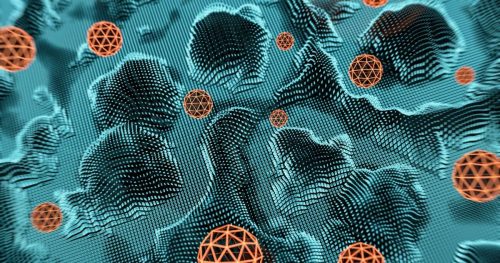At-home STD tests are becoming easily available across the globe. They deliver amazing convenience and a chance to enjoy the most confidential opportunity out of them all. DIY screening kits, however, aren’t without drawbacks. There are some limitations you need to become aware of before buying such a DIY product.
Continue readingEverything You Need to Know About Blue Waffle Disease: A Real STD or a Myth?
Blue waffle disease was first mentioned online in 2010 and ever since, conversations about the new STD have been ongoing. Many people are wondering whether this one is a real condition or just an online hoax. Reviewing the available information and consulting medical professionals reveals the answer to this question.
Continue readingNanoparticle HIV Vaccine Delivers Promising Results in Clinical Trial
Scientists have long been working on the development of an effective and broad HIV vaccine. A new nanoparticle HIV vaccine candidate seems to be overcoming challenges that previous developments couldn’t address. The candidate helps for the development of antibodies that can neutralise about 90 per cent of HIV strains.
Continue readingResearchers Take on the Biggest Challenge to Finding a Cure for HIV
While modern antiretroviral therapies can suppress the human immunodeficiency virus to nearly undetectable levels, there is still no cure for the infection. Cornell researchers have currently received a grant that will allow examination of important cellular mechanisms standing in the way of eliminating the infection. This new research increases the hope of finding a cure.
Continue readingHigh Risk Groups Benefit from Reliable HIV Protection, Annual Study Shows
It’s a well-known fact that HIV affects men disproportionately. The latest annual statistics from the US suggest that high risk groups like men who have sex with men are benefiting from reliable protection in the form of HIV PrEP. PrEP has contributed to a significant slowdown in the number of new infections and the trend has been ongoing ever since 2017.
Continue readingGonorrhoea Resistant to Several Classes of Antibiotics Identified for the First Time
Research from the US suggests that a new “super” strain of gonorrhoea has already started infecting individual. This strain is resistant to nearly every class of antibiotic used for the treatment of the STD. the situation is considered a public health crisis that necessitates the development of a brand new therapeutic approach.
Continue readingThe Main Reason Why HIV is a Lifelong Condition
The scientific community still hasn’t discovered a 100 per cent effective cure for HIV and researchers may know the reason why. A new Johns Hopkins University study suggests that the virus uses complex cellular processes to maintain a solid DNA reservoir. This is even true among individuals receiving antiretroviral therapy.
Continue readingWhat to Do if You Find Out Your Partner Has Given You an STD
An STD should be the last thing on your mind when in a relationship but it’s possible to get an infection from your partner (even when you’re in a committed monogamous relationship). Getting the news about a sexually transmitted disease is never easy but you should get yourself together and complete a couple of important steps.
Continue readingNew Findings Deliver Proof on the Resilience of HIV
The human immunodeficiency virus employs numerous mechanisms to spread within the human body and remain concealed. A thorough clinical trial suggests how it does so during the early stages of an infection. The findings of the clinical trial also make it clear why antiretroviral therapy could be ineffective in the beginning of an active infection.
Continue readingBest Ways to Protect Yourself as STD Cases Continue Surging
For many years, we’ve been observing a drop in new infections with STDs like chlamydia, gonorrhoea and syphilis. Unfortunately, the positive trend is starting to get reversed. Is there something you can do in order to protect yourself and reduce the risk of contracting an STD? Here are some of the most efficient forms of prevention.
Continue reading









